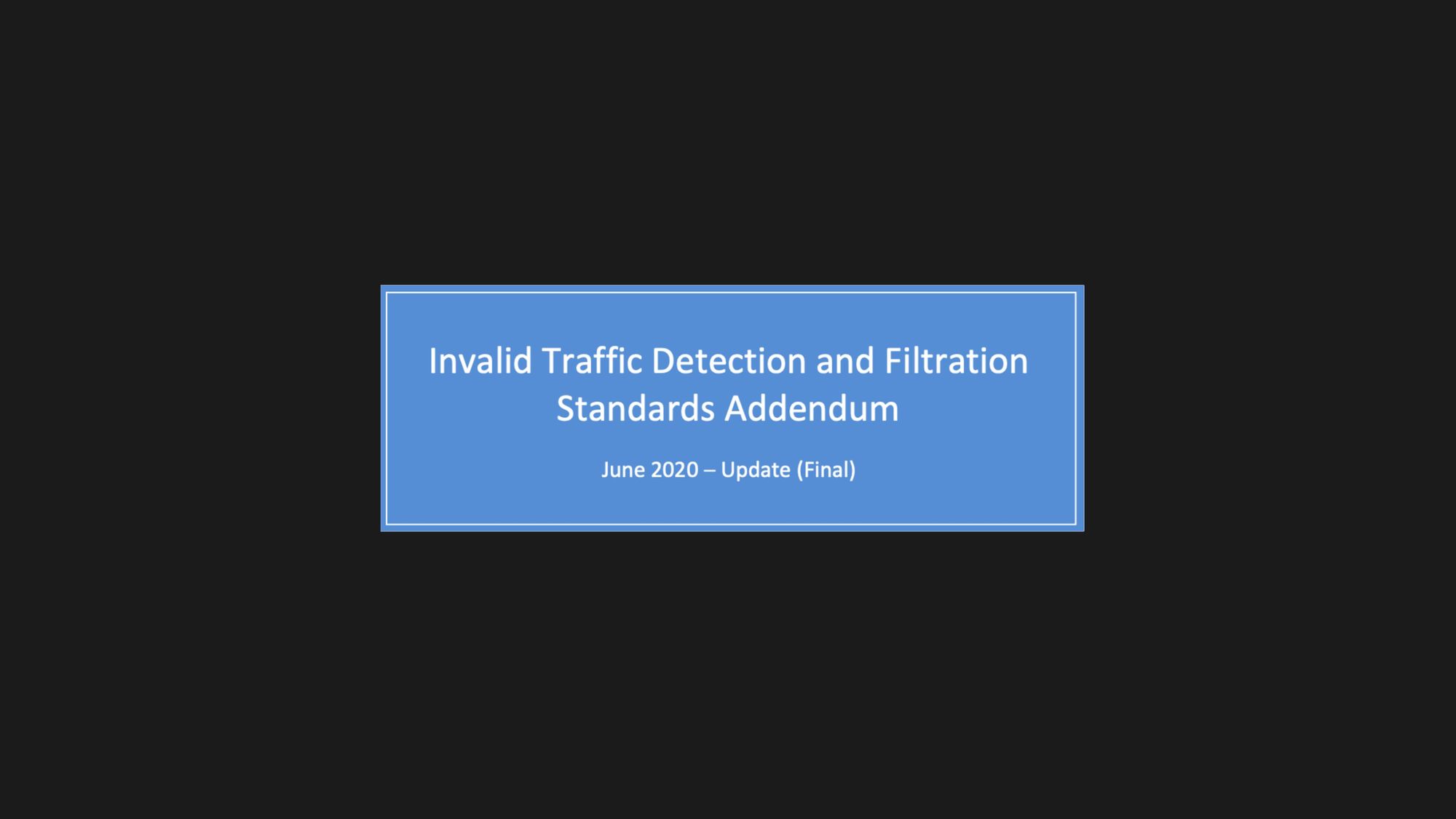MRC updates the Invalid Traffic (IVT) Detection and Filtration Standards

The Media Rating Council (MRC) this month issued an update to its Invalid Traffic (IVT) Detection and Filtration Standards. MRC says the additions and revisions in these updated Standards are intended to modernize the Invalid Traffic Detection and Filtration Guidelines Addendum, originally issued by MRC in October 2015, to more fully account for the range of invalid traffic threats and related issues that exist in today’s online environment.
The MRC defines Invalid Traffic (IVT) generally as traffic or associated media activity that does not meet certain quality or completeness criteria, or otherwise does not represent legitimate traffic that should be included in measurement counts. Among the reasons why traffic may be deemed invalid is that it is a result of non-human traffic (spiders, bots, etc.), or activity designed to produce IVT.
According to MRC, the update was created with the participation and input of a group of digital measurement practitioners, as well as a group of industry technical experts. A draft version was issued in February, which was subject to a 30-day public comment period.
The new MRC-accredited digital measurers will have a one-year grace period, beginning on 25th June, to come into compliance.
MRC is a non-profit industry association established in 1963 comprised of television, radio, print and digital media companies, as well as advertisers, advertising agencies and trade associations, whose goal is to ensure measurement services that are valid, reliable and effective.
The additions and revisions to the MRC’s previous IVT guidance
- The addition of more specific Sophisticated Invalid Traffic (SIVT) areas.
- The addition and updating of previous interim guidance on data center traffic requirements.
- The addition of specific requirements on risk assessment by platform and relevant traffic segment, as well as a requirement to directly link these to specific controls for each.
- New requirements to disclose a “decision rate” metric (defined as the percentage of all impressions intended for measurement where sufficient information was obtained to make a valid or invalid decision), along with definitions, calculations and requirements for supporting partial detection decisions.
- The addition and updating of previous interim guidance on requirements and disclosures associated with sampling approaches to IVT detection and filtration.
- New requirements for the treatment and disclosure of purchased and acquired traffic.
- The formalization of requirements, previously documented in MRC’s Brand Safety Supplement, for the use of Machine Learning and Human Intervention in IVT detection practices.
- The addition and updating of previous interim guidance on up-front filtration requirements.
- The addition and updating of previous interim guidance on mobile in-app requirements and added OTT-specific considerations.
- The addition of guidance and requirements for logged-in and subscription-based environments.
- New detailed IVT discrepancy resolution procedures and requirements.

